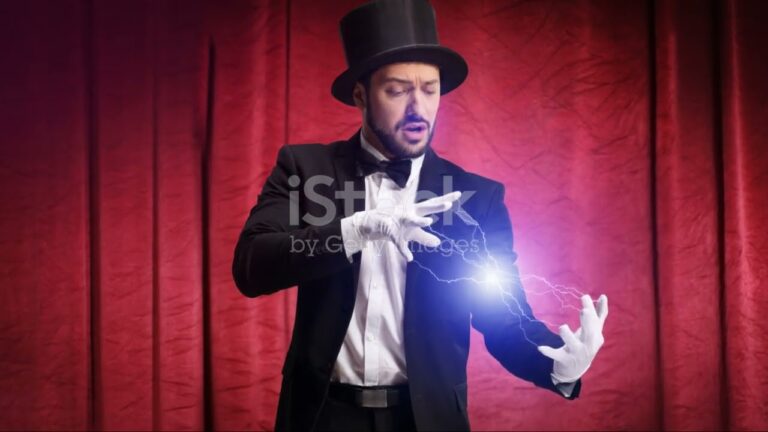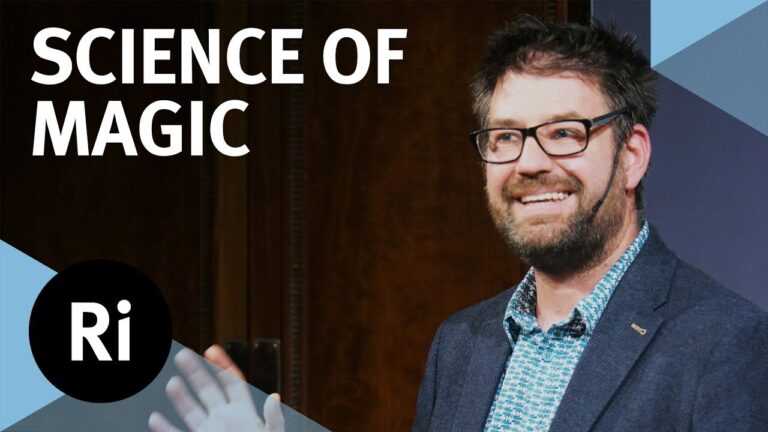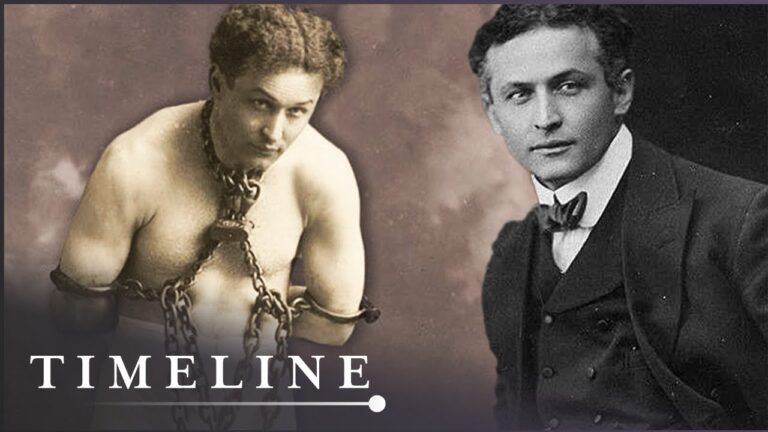Collaboration in Magic: The Role of Stagehands in Houdini’s Performances
Many people picture Harry Houdini as a lone genius performing death-defying escapes, but the truth reveals a more complex story. Behind every successful magic performance stood a dedicated team of stagehands. They helped create the illusions, manage props, and ensure Houdini’s safety during his most dangerous stunts.
The secret world of stage magic and performance relied heavily on precise timing and coordination between multiple people. When you watch old footage of Houdini’s acts, you’re actually witnessing the results of countless hours of practice and preparation by an entire crew working in perfect synchronization.
Houdini’s journey from circus performer to legendary escape artist depended on building trust with his team. These relationships proved essential as his stunts grew more complex and dangerous. His wife Bess served as his most trusted assistant, but dozens of others worked behind the scenes to maintain his reputation as the world’s greatest magician.
The Importance Of Stagehands In Magic

Skilled stagehands form the backbone of magical performances. They work tirelessly behind the scenes to create illusions that captivate audiences. Their precision and expertise transform mere tricks into spectacular theatrical experiences.
Historical Context Of Stagehands In Theater
Victorian-era magic shows relied heavily on mechanical innovations and hidden assistants. These early stagehands mastered complex rope systems, trap doors, and mirrors to create seemingly impossible effects.
The relationship between magicians and their crews grew more sophisticated during the golden age of magic. Hidden mechanisms required precise timing and coordination between performers and stagehands.
Your understanding of magic’s history isn’t complete without recognizing the contributions of these invisible artists. They developed specialized skills unique to magic performances, from operating complex machinery to managing precise lighting cues.
The Evolution Of The Stagehand’s Role In Magic Performances
Modern stagehands combine traditional techniques with cutting-edge technology. They manage:
- Digital lighting systems
- Computerized stage equipment
- Advanced sound effects
- Mechanical props and rigging
The spectacle element in contemporary magic shows depends entirely on skilled technical crews. You’ll find them coordinating multiple elements simultaneously during performances.
Magic’s technical demands continue growing more complex. Today’s stagehands need expertise in both classical stagecraft and modern theatrical technologies.
Houdini And His Stagehands: A Unique Partnership

Behind every successful escape act stood a team of skilled stagehands who worked in perfect coordination with Houdini. Their precise timing and attention to detail made the difference between a flawless performance and potential disaster.
The Selection And Training Of Houdini’s Stagehands
Houdini chose his stagehands with extreme care. He required them to pass rigorous physical tests and demonstrate exceptional attention to detail.
Each new stagehand went through three months of intensive training. They learned complex rope knots, lock mechanisms, and emergency procedures.
Stagehands practiced their roles for hours each day until they could perform their tasks blindfolded. Speed and precision were essential – a delay of even a few seconds could put Houdini at risk.
Key Stagehands In Houdini’s Career
Jim Collins served as Houdini’s chief assistant for over 15 years. His mechanical expertise proved invaluable for maintaining and modifying equipment.
Franz Kukol, an Austrian immigrant, became one of Houdini’s most trusted stagehands in 1903. His strength and reliability made him indispensable for the Water Torture Cell escape.
Notable Longtime Stagehands:
- James Vickery (1908-1916)
- Tom Hanlon (1912-1920)
- George White (1915-1926)
The Trust And Bond Between Houdini And His Team
Emotional support and partnership formed the foundation of Houdini’s relationship with his stagehands. He treated them like family, often inviting them to holiday celebrations.
Houdini paid his stagehands double the standard industry rate. He believed that fair compensation built loyalty and encouraged excellence.
The team shared meals together before shows and developed secret hand signals for communication during performances. This close connection enabled them to react instantly to any unexpected situations.
Behind-The-Scenes Roles And Responsibilities

Skilled stagehands worked diligently to execute Houdini’s complex performances through careful coordination and attention to detail. Their roles required extensive training and precise timing to maintain both safety and the illusion of magic.
Specific Duties Of Houdini’s Stagehands
His stage assistant played a crucial role in perfecting the timing of each act. You would find 4-6 dedicated stagehands positioned at key points around the stage during performances.
The stagehands maintained strict communication protocols using hand signals and timing cues. Their primary responsibility was ensuring Houdini’s safety during dangerous escapes.
Key duties included:
- Monitoring restraints and locks
- Managing emergency release mechanisms
- Controlling stage lighting and timing
- Assisting with quick costume changes
Preparation Routines For Illusions And Escapes
Each performance required meticulous preparation starting hours before showtime. Your stagehands would test every piece of equipment multiple times to prevent malfunctions.
The team followed detailed checklists for:
- Inspecting chains, locks, and restraints
- Checking water tank seals and temperature
- Setting up trap doors and hidden panels
- Positioning emergency tools and backup equipment
Handling Props And Equipment
Stagehands maintained an organized system for managing the extensive collection of specialized props. You needed skilled craftsmen to repair and modify equipment between shows.
The prop master kept detailed inventories of:
- Essential Items: Handcuffs, locks, keys
- Safety Equipment: Backup restraints, bolt cutters
- Stage Props: Curtains, platforms, screens
Team members cleaned and oiled all metal components daily. They packed equipment in specific cases to prevent damage during transport between venues.
The Execution Of Dangerous Escapes
Behind every death-defying escape, a team of skilled stagehands worked tirelessly to ensure both spectacle and safety. Their precise coordination made Houdini’s most dangerous stunts possible while maintaining crucial safety standards.
Coordination And Timing In High-Risk Performances
Your stagehands must maintain constant visual contact during water escapes. Each person holds a specific position with clear sight lines to both Houdini and the other team members.
Hand signals and countdown systems help coordinate critical moments. A designated timekeeper tracks submersion duration for underwater escapes, while spotters watch for distress signals.
Equipment checks happen at three key stages: pre-show setup, immediately before performance, and during the act itself. Each stagehand memorizes their role in the sequence and practices emergency protocols daily.
Safety Protocols And Emergency Procedures
Emergency axes and glass-breaking tools remain hidden but accessible at all times. Two rescue divers stay ready during the Chinese Water Torture Cell performance.
A coded knock system allows communication between Houdini and the team. Three rapid knocks signal immediate extraction needed.
Medical personnel stand by with oxygen and first aid equipment. The team rehearses emergency procedures weekly, timing their response to reach Houdini within 15 seconds.
Case Studies Of Famous Escapes
The Milk Can escape required five stagehands in precise positions. Two monitored the water level, one watched the timer, and two stood ready with rescue tools.
During the outdoor water escapes, teams used a pulley system to extract Houdini quickly if needed. The rope system remained invisible to audiences but provided crucial safety backup.
The Bridge Jump challenge employed three boats with rescue teams. Each boat maintained radio contact and specific rescue zones, ensuring complete coverage of the performance area.
The Impact On Modern Stage Magic
Houdini’s methods of working closely with his stage crew revolutionized how magic shows operate, creating lasting changes that shape performances today.
Influence On Contemporary Magicians And Their Teams
You’ll find modern illusionists drawing inspiration from Houdini’s collaborative approach. Large-scale illusions now require teams of 10-15 skilled stagehands, each with specialized roles.
David Copperfield’s famous “Flying” illusion needs precise coordination between the performer and at least six hidden crew members. Penn & Teller openly acknowledge their backstage team during shows, following Houdini’s respect for his assistants.
Professional magic shows now include dedicated technical rehearsals just for the crew, a practice Houdini pioneered. This ensures perfect timing and safety for complex illusions.
Innovations In Stagehand Techniques And Tools
Magic crews now use wireless communication systems and digital cues, building on Houdini’s system of hand signals and timing marks.
Stage crews develop new rigging techniques specifically for magic shows. Custom tools help manage complex props and equipment, much like Houdini’s specially designed lockpicks and escape aids.
Modern safety protocols evolved from Houdini’s careful preparation methods. Every major illusion requires backup systems and emergency procedures, managed by trained crew members.
The Legacy Of Houdini’s Collaborations In Today’s Performances
Magic shows today combine advanced technology with traditional stagecraft. Stagehands learn both classic techniques and modern equipment operation.
In magic theaters, sophisticated trap doors and specialized lighting systems are now common. These new features require expert crews to operate them. These developments stem from Houdini’s innovations in stage design.
Many famous illusions still use variations of Houdini’s original staging methods. His influence also shows in how magicians brief their crews and maintain secrecy around methods.






